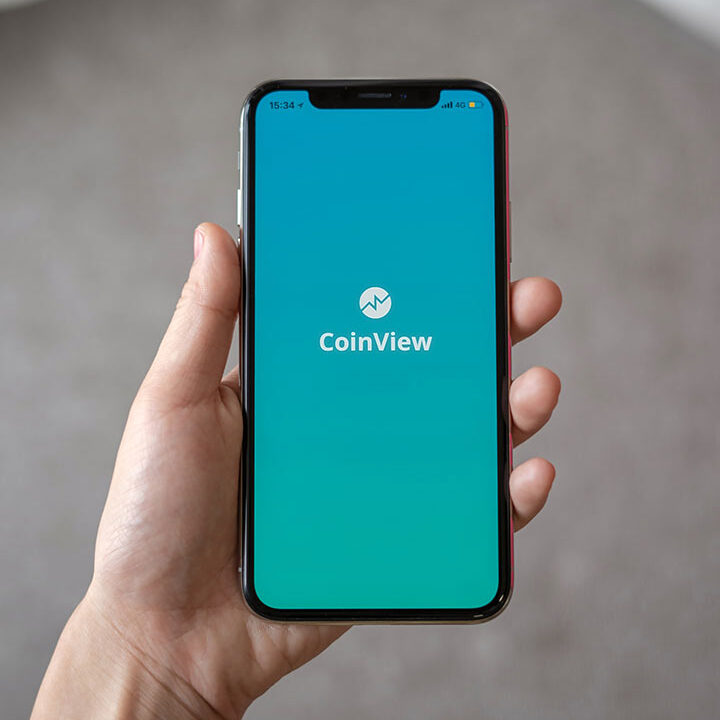Uncover the Hidden Secrets of Reverse Video Search
Are you tired of scrolling endlessly through countless videos on the internet, trying to find the one you’re looking for? Well, get ready to uncover the hidden secrets of reverse video search. This innovative technology allows you to search for videos based on visual content rather than keywords or descriptions.
Imagine being able to find that viral video you saw on social media with just a screenshot or a snippet of the video itself. Reverse video search can make that a reality. It uses advanced algorithms to analyze the visual elements of a video and match them with similar content on the internet.
Whether you’re a content creator looking for inspiration or a curious internet user, reverse video search can be a game-changer. By harnessing the power of this cutting-edge technology, you can quickly and effortlessly find videos that match your desired visual criteria.
So, say goodbye to endless scrolling and hello to the future of video search. Uncover the hidden secrets of reverse video search and unlock a whole new world of online video discovery.
How does reverse video search work?
Reverse video search utilizes sophisticated algorithms and machine learning techniques to analyze visual content within videos. Unlike traditional search methods that rely on text-based queries, this technology employs a process called content-based video retrieval. At its core, the process involves breaking down the video into frames and extracting visual features such as colors, shapes, and patterns. These features are then compared to a vast database of videos to identify similar content.
The initial step in reverse video search is the extraction of key frames from the video. These keyframes act as representative images that capture the essential visual elements. Advanced image recognition techniques are applied to these frames, allowing the software to identify distinct objects, scenes, and even motion dynamics. By creating a unique signature for each frame, the system can match these signatures with those of other videos stored in its database. This process is akin to how a fingerprint is used to identify an individual, making it a powerful tool for locating specific video content.
Once the visual features are extracted and compared, a ranking algorithm determines the relevance of the matched videos. The system evaluates various factors such as the similarity of visual content and the overall context of the videos. This allows users to receive a curated list of videos that best match their search query. Additionally, advancements in artificial intelligence and deep learning continue to enhance the accuracy and efficiency of reverse video search, making it an increasingly reliable method for video discovery.
Benefits of using reverse video search

The advantages of reverse video search extend far beyond mere convenience. One significant benefit is the ability to locate video content quickly and efficiently. This technology eliminates the need for lengthy keyword searches, allowing users to find videos simply by uploading a visual reference. This is particularly useful when users have only a small portion of the video or a related image, such as a screenshot. In an age where content is generated at an unprecedented rate, this capability streamlines the search process.
Another benefit is the potential for enhanced content discovery for creators and marketers. By employing reverse video search, content creators can find inspiration by exploring related videos in their niche. This process can lead to innovative ideas and help creators stay ahead of trends. For marketers, understanding what types of visuals resonate with audiences can inform video production strategies, ensuring that their content aligns with current viewer preferences.
Moreover, reverse video search plays a vital role in copyright enforcement and content verification. For businesses and content owners, monitoring the use of their videos across the internet is crucial. This technology allows them to identify unauthorized usage and take appropriate action to protect their intellectual property. Additionally, by verifying the authenticity of video content, reverse video search helps combat misinformation, ensuring that viewers can access reliable and credible videos.
Reverse video search tools and platforms
Numerous tools and platforms have emerged to facilitate reverse video searches, each offering unique features and capabilities. One of the most popular tools is Google Images, which allows users to upload images or screenshots to find visually similar content across the web. While primarily known for image searches, this feature extends to videos, as it can identify frames that match the uploaded visuals. Google’s vast database ensures a high probability of finding related video content.
Another notable platform is TinEye, which specializes in reverse image searches but has increasingly incorporated video search capabilities. TinEye’s algorithms analyze visual data to provide users with a list of sources where the image or video appears. This tool is especially useful for those looking to track the origins of a video or find variations of a specific clip. Its user-friendly interface makes it accessible for individuals and businesses alike.
For those seeking a more specialized video search experience, platforms like Berify and VideoSurf cater specifically to video content. Berify uses advanced fingerprinting technology to track videos across various platforms, providing valuable insights for content creators and copyright holders. VideoSurf, on the other hand, employs a combination of visual recognition and metadata analysis to deliver results that are both relevant and contextually rich. These platforms exemplify the diversity of tools available for reverse video search, catering to different needs and preferences.
How to conduct a reverse video search

Conducting a reverse video search is a straightforward process, even for those unfamiliar with the technology. The first step involves selecting the right platform or tool based on your needs. If you have a specific image or frame from a video, you can use Google Images or TinEye to initiate your search. Simply upload the image or paste the URL of the video, and the platform will begin analyzing the visual content.
Once you have uploaded the visual reference, the next step is to review the search results. Most platforms will provide a list of videos that closely match the visual features of your input. It’s essential to carefully examine these results, as some platforms may also include variations or remixes of the original content. By clicking on the links provided, you can access the videos and determine if they align with your original query.
If you are seeking to find videos by using a specific video clip, tools like Berify offer a more comprehensive option. By uploading a video file, the platform will analyze it for unique visual signatures and return results that feature similar content. This method is particularly effective for content creators or businesses looking to track their videos online. After receiving the results, users can take further action, such as reaching out to platforms for copyright issues or gathering inspiration for new content.
Practical applications of reverse video search
Reverse video search has a wide array of practical applications across various industries. In the realm of marketing, brands can leverage this technology to track the performance of their video campaigns. By identifying where their videos are being shared or repurposed, marketers can gain insights into audience engagement and optimize their strategies accordingly. This data-driven approach enhances the effectiveness of marketing efforts and helps brands reach their target demographics more efficiently.
In education, reverse video search can serve as a valuable tool for educators and students alike. Teachers can find relevant video content that complements their curriculum, making lessons more engaging and interactive. Students, on the other hand, can utilize this technology to locate educational videos that suit their learning styles. By accessing high-quality visual materials, learners can deepen their understanding of complex topics.
Additionally, reverse video search plays a crucial role in journalism and fact-checking. Journalists can use this technology to verify the authenticity of video content, ensuring that they are reporting accurate information. In an era where misinformation can spread rapidly, the ability to trace the origins of a video becomes essential for maintaining credibility. This application underscores the importance of reverse video search in promoting transparency and accountability in media.
Challenges and limitations of reverse video search

Despite its numerous benefits, reverse video search is not without its challenges and limitations. One significant hurdle is the accuracy of the search results. While advanced algorithms have improved the capability of these tools, they are not infallible. Variations in video quality, compression, or editing can affect the ability of the software to identify matching content. As a result, users may encounter false positives or miss relevant videos altogether.
Another limitation lies in the availability of databases. Many reverse video search tools rely on specific platforms or sources to gather their data. Consequently, if a video is hosted on a less popular site or is not indexed properly, it may not appear in search results. This can be particularly frustrating for users seeking obscure or niche content. Additionally, the rapid pace of content creation means that databases may not always be up-to-date, further complicating the search process.
Privacy concerns also pose challenges for reverse video search technologies. As users upload images or videos for analysis, there is an inherent risk of data misuse. Some platforms may collect and store user data, raising questions about how this information is handled. Users must be cautious and choose reputable platforms that prioritize data security. Balancing the benefits of reverse video search with these challenges is essential for ensuring a positive user experience.
Tips for optimizing your videos for reverse video search
To maximize the effectiveness of reverse video search, content creators should consider several optimization strategies. First and foremost, ensuring high video quality is crucial. Clear visuals, well-defined objects, and minimal compression artifacts can significantly enhance the chances of successful retrieval. When videos are produced with high resolution and clarity, they are more likely to be accurately identified by search algorithms.
In addition to video quality, creators should also focus on the visual elements within their content. Incorporating distinct and recognizable features, such as unique settings, vibrant colors, or specific objects, can help improve searchability. When these elements are prominent in the video, they create a stronger visual signature that can be matched with user queries. Creators can benefit from conducting test searches to understand how their videos are being indexed and perceived.
Finally, adding descriptive metadata can further enhance the chances of being discovered through reverse video search. Although these tools primarily rely on visual analysis, accompanying metadata such as titles, tags, and descriptions can provide additional context for search algorithms. When metadata is aligned with visual content, it increases the likelihood of appearing in relevant search results. By implementing these optimization tips, content creators can better position themselves for successful video discovery.
Case studies of successful reverse video search campaigns
Examining successful case studies can provide valuable insights into the effective use of reverse video search. One notable example is how a global marketing agency utilized reverse video search to track the performance of a viral campaign. By analyzing where their promotional video was being shared across various platforms, the agency identified key demographics and adjusted their marketing strategy accordingly. This data-driven approach led to a significant increase in engagement and conversions, showcasing the power of reverse video search in optimizing marketing efforts.
Another compelling case study involves a documentary filmmaker who used reverse video search to locate archival footage for a project. The filmmaker had only a brief clip from a historical event and employed reverse video search to find additional video sources. By successfully identifying relevant footage, the filmmaker was able to enrich the documentary’s narrative and provide a more comprehensive account of the event. This example illustrates how reverse video search can facilitate research and enhance storytelling.
In the realm of education, a university implemented reverse video search to improve student engagement. By providing students with the ability to find related educational videos quickly, the university fostered a more interactive learning environment. The initiative led to increased participation in online discussions and a deeper understanding of course material. This case study highlights the potential for reverse video search to transform educational practices and enhance the learning experience.
Conclusion: The future of reverse video search
The future of reverse video search holds immense potential as technology continues to evolve. As artificial intelligence and machine learning capabilities advance, the accuracy and efficiency of reverse video search tools are expected to improve significantly. This will enable users to conduct even more precise searches, enhancing their overall experience and expanding the range of applications for this technology.
Moreover, as the volume of video content on the internet continues to grow, reverse video search will become increasingly essential for navigating this vast digital landscape. Content creators, marketers, educators, and consumers alike will rely on this technology to discover relevant videos and optimize their online experiences. The ability to find visual content based on imagery rather than text will revolutionize how we interact with video media.
Ultimately, the ongoing development of reverse video search will not only transform video discovery but also contribute to a more informed and connected digital community. By harnessing the power of visual recognition and analysis, users will unlock new opportunities for creativity, learning, and collaboration. As we embrace this future, reverse video search will undoubtedly become an indispensable tool in our digital toolkit.








